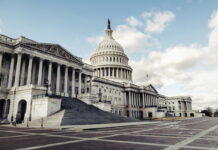A new strategy is set to be implemented in Romania in a bid to tackle the threat of gambling addiction
In plans that were put forward on Friday July 19, President Klaus Iohannis promulgated a decree co-authored by Romania’s Ministry of Health and Ministry of Justice to launch eight ‘regional centres for the treatment of addictions’.
Key to the strategy is a localised approach for each region in focus, as the new strategy aims to address current ‘treatment inadequacies’ for drug, alcohol and gambling addictions within Romania, particularly for those under 25.
Minister of Justice, Alina Gorghiu, endorsed the project, citing that the current framework to combat addictions left Romanians exposed as treatment options were primarily offered by private clinics and NGOs.
Gorghiu stated: “I’m glad that the party I belong to, PNL, initiated this law because in Romania the state could not properly treat these big problems that are especially among the young generation.”
The Ministry of Justice will oversee the project, in which the government must prioritise the funding and construction of the regional addiction centres, though no specific timeline has been provided.
Regional MPs and mayors have raised growing concerns related to gambling addiction, as over 25,000 gambling venues operate in the country.
In April, Prime Minister Marcel Ciolacu sanctioned an executive order to ban “gambling localities in towns with less than 15,000 registered inhabitants”.
However, an intervention by the Supreme Court of Cassation deemed that PM Ciolacu must implement his executive order as a federal law requiring a constitutional review.
Romania’s licensed operators are currently adjusting to new tax rates applied to gambling winnings of 3 per cent on winnings up to 10,000 lei (€2,000), a fixed tax plus 20 per cent on winnings between 10,001 and 66,750 lei, and a fixed tax plus 40 per cent on winnings over 66,750 lei (€13,350).
Despite concerns about gambling addiction, Romania’s government has not funded a census on the issue since 2015, leaving authorities uninformed about the exact percentage of harm.











